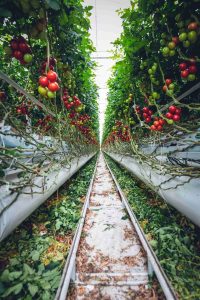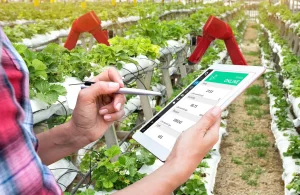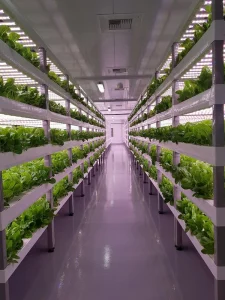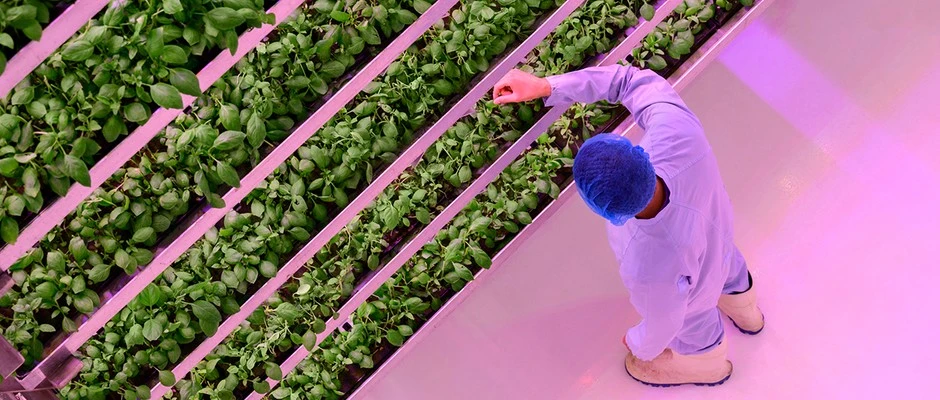Vertical farming has emerged as a promising solution to address the growing need for sustainable food production in urban areas. As the global population continues to expand and urbanize, the demand for efficient and environmentally friendly agricultural practices is increasing.
In this article, we will explore the role of vertical farming in shaping the future of sustainable urban food systems through efficient space utilization, resource conservation, year-round crop production, integration with smart city technologies, and the promotion of local food systems.
Efficient Space Utilization in Urban Areas
Urbanization often results in limited land availability, making it increasingly difficult to allocate space for traditional agriculture. Vertical farming presents a unique solution to this challenge by stacking crops in vertical layers, often within multi-story buildings or repurposed structures.
This approach allows for efficient use of space, with some vertical farms occupying up to 100 times less land than conventional farms.Incorporating vertical farming into urban landscapes can also help to reduce urban heat island effects, as green spaces are known to lower temperatures and improve air quality.
By integrating vertical farming infrastructure into existing urban designs, cities can foster greener environments while simultaneously addressing food production challenges.

Water and Resource Conservation
One of the key advantages of vertical farming is its ability to conserve water and other resources. Traditional farming methods typically require large quantities of water, often resulting in significant waste.
In contrast, vertical farming systems use hydroponic, aeroponic, or aquaponic technologies to deliver water and nutrients directly to plant roots, significantly reducing the amount of water needed for crop growth.
Vertical farming also minimizes the need for harmful pesticides and herbicides, as controlled environment agriculture (CEA) enables precise management of growing conditions. This not only leads to healthier crops but also reduces the environmental impact of agricultural practices.
Year-Round Crop Production and Enhanced Food Security
Vertical farming offers the potential for year-round crop production, as it relies on controlled environment agriculture to maintain optimal growing conditions. This eliminates the influence of seasonal weather fluctuations and allows for the continuous cultivation of crops, contributing to improved food security in urban areas.
With climate change causing increasingly unpredictable weather patterns and threatening traditional agricultural practices, the ability to grow crops in a controlled environment becomes increasingly important. Vertical farming can help to buffer urban food systems from the effects of climate change, ensuring a steady supply of fresh produce for urban residents.
Integration of Vertical Farming and Smart City Technologies
The future of vertical farming is closely tied to the development of smart city technologies. IoT devices, automation, and data analytics play an essential role in optimizing vertical farming operations, allowing for real-time monitoring and adjustments to growing conditions. This results in higher crop yields and reduced resource consumption.
Furthermore, the integration of vertical farming with renewable energy sources, such as solar panels, can help to reduce the overall carbon footprint of urban food production. As cities continue to embrace smart technology, the role of vertical farming in creating sustainable urban food systems will only grow.
How the implementation of IoT devices can enhance vertical farming operations, leading to more efficient and sustainable food production systems in urban areas:
- Real-time monitoring and adjustments with IoT devices:
- Sensors measure factors such as temperature, humidity, and nutrient levels.
- Enable precise control of growing conditions for optimal crop growth.
- Automation in vertical farming systems:
- Robotic systems handle tasks such as planting, harvesting, and crop maintenance.
- Increase efficiency and reduce labor costs, making vertical farming more economically viable.
- Data analytics for improved decision-making:
- Analyze crop performance data to identify patterns and trends.
- Allow for continuous improvement of growing conditions and resource management.
- Integration with renewable energy sources:
- Solar panels or wind turbines can be used to power vertical farming systems.
- Reduce the overall carbon footprint of urban food production.
- Digital platforms for supply chain management and local distribution:
- Facilitate communication between vertical farms, distributors, and consumers.
- Enable efficient distribution of fresh produce within urban areas, further reducing food miles.

Promotion of Local Food Systems and Reduced Food Miles
Vertical farming can contribute significantly to the development of local food systems by producing fresh, nutritious produce directly within urban areas.
This reduces the need for long-distance transportation of food, leading to decreased greenhouse gas emissions and a lower overall environmental impact.
By supporting local food systems, vertical farming also strengthens local economies and fosters community engagement in food production. Urban residents can enjoy fresher, healthier food while also contributing to a more sustainable and resilient food system.
Vertical farming presents a compelling solution for addressing the increasing demand for sustainable food production in urban areas.
By leveraging advanced technologies and innovative farming practices, vertical farming offers a myriad of benefits, including efficient space utilization, water and resource conservation, and year-round crop production. Additionally, the integration of smart city technologies and renewable energy sources further strengthens the sustainability and efficiency of these systems.
The promotion of local food systems through vertical farming not only reduces the environmental impact of food transportation but also contributes to the economic well-being of urban communities. As our cities continue to grow and evolve, vertical farming has the potential to play a pivotal role in ensuring food security and building resilient, sustainable food systems.
In conclusion, the future of urban food production relies on our ability to adopt and adapt innovative solutions like vertical farming. By embracing this approach, we can create a more sustainable and environmentally responsible food system that meets the needs of our ever-expanding urban populations.
The integration of vertical farming into urban landscapes will not only provide fresh, nutritious produce but will also contribute to the overall health and well-being of our cities and their inhabitants.








